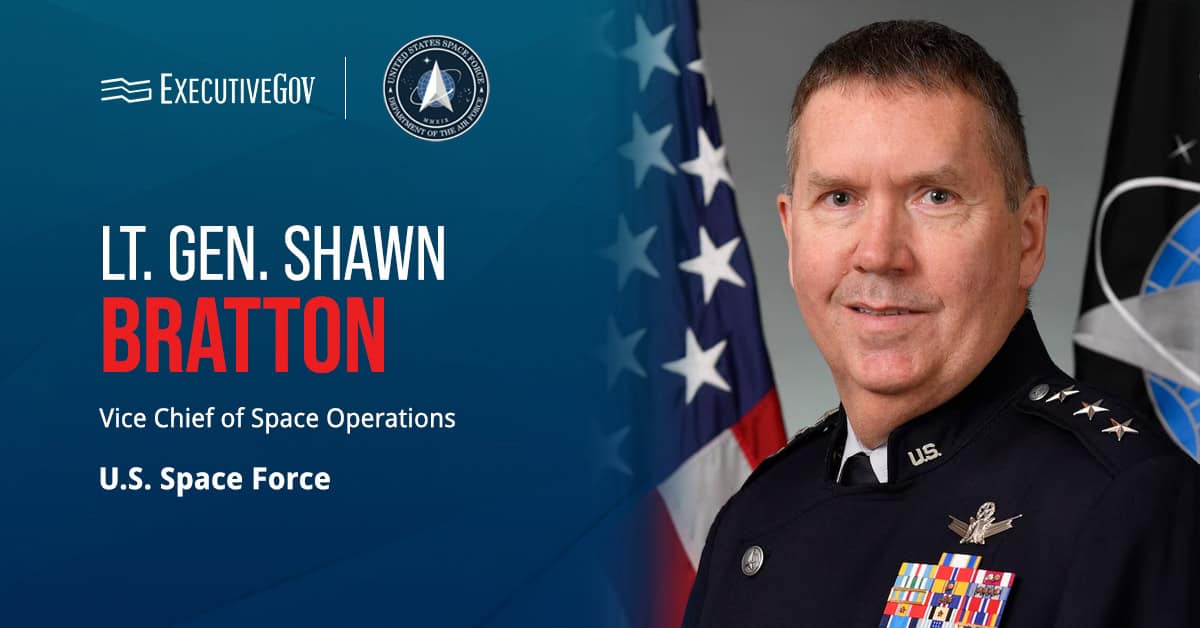Northrop Grumman is scheduled to reveal its B-21 Raider during a highly-anticipated unveiling event at the company’s Palmdale, California facility on Friday evening, said CEO, President and Chair Kathy Warden in a CNBC interview.
For the past eight years, Northrop Grumman has been working with the U.S. Air Force to design, test and build the next generation strike aircraft, which Warden anticipates will equip the U.S. and our allies with an “information advantage.”
“The B-21 Raider is a long-range strike aircraft, and what that means is it has the range to go anywhere in the world and keep a target at risk. It also is a platform that is low-observable, and that means it can enter enemy airspace and not be detected,” said the seven-time Wash100 Award winner.
Notably, the B-21 has the ability to connect with other platforms — a function which closely aligns with the Department of Defense’s JADC2 initiative and its overarching goal to more closely link tactical and strategic networks.
Warden credited Northrop Grumman’s ability to deliver the B-21 on schedule and on budget to “digital engineering,” which she said has helped the company “iterate on thousands of designs and then translate those into the platform that the world will see tonight.”
Northrop Grumman’s B-21 Raider bomber is scheduled to make its first flight in early 2023, and the Falls Church, Virginia-based defense technology contractor currently has six B-21 Raiders in production. Early cost projections for the program hovered around $550 million per aircraft, but due to inflation, that estimation is now up to nearly $700 million per aircraft.
“We see the value creation for Northrop Grumman as still very much ahead of us as we move into this production phase,” Warden predicted. “The Air Force is talking about building at least a hundred aircraft.”
CNBC’s Morgan Brennan noted that Northrop Grumman is uniquely predicting top-line growth next year, while many other defense prime contractors are not. Warden explained that this projected growth is occurring “in spite of supply chain challenges” and because Northrop Grumman’s talent base is expanding.
“We are starting to see labor turn the corner, so we’re optimistic about 2023 and our ability to grow faster than we did in 2022,” said Warden. “The way we’re winning work and being successful on programs like the B-21 Raider is because our people are incredibly innovative and our talent is creating the ideas that solve our customers’ hardest problems.”
Northrop Grumman’s collaboration with the Air Force goes beyond the B-21 program. In late November, the Air Force exercised a contract option to purchase 42 F-16 aircraft radars from Northrop Grumman. Earlier this year, Northrop teamed up with Raytheon Technologies and won a $985 million contract to build and demonstrate a Hypersonic Attack Cruise Missile.





